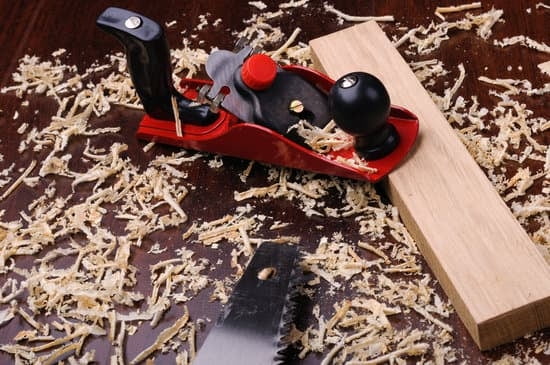Pricing is a crucial aspect of any business, and custom woodworking is no exception. Determining the right price for your custom woodworking projects can be challenging, but it is essential to ensure that you are covering all costs while maintaining profitability. In this article, we will explore how to price custom woodworking accurately and effectively.
When pricing custom woodworking projects, there are several factors to consider. These include material costs, labor costs, overhead costs, and profit margins. Understanding and calculating these elements will help you determine a fair and competitive price for your work. Additionally, market research plays a vital role in setting prices as it allows you to analyze the competition and identify pricing trends in the industry.
Setting your rates can be a daunting task, but with the right approach, you can establish hourly rates or project rates that reflect the value of your craftsmanship. Customization fees are another aspect to consider when pricing custom woodworking projects. Charging for customization and additional features ensures that you are compensated fairly for the unique aspects of your work. By implementing value-based pricing strategies and handling discounts and negotiations effectively, you can maximize profitability without compromising on quality.
Factors to Consider When Pricing Custom Woodworking
When it comes to pricing custom woodworking projects, there are several key factors that need to be considered in order to ensure profitability and competitiveness in the market. Understanding the costs involved and how to factor in appropriate profit margins is essential for success in this industry.
Here are some important factors to consider when pricing custom woodworking projects:
- Material Costs: The cost of materials is a crucial component of pricing custom woodworking projects. Different types of wood and hardware can vary significantly in price, so it’s important to accurately calculate the materials needed for each project and their associated costs.
- Labor Costs: Determining labor costs involves calculating the amount of time it will take to complete a project, including any additional help or specialized skills required. Setting an hourly rate for labor is common practice in the woodworking industry.
- Overhead Costs: Overhead costs include expenses such as rent, utilities, insurance, and tools/equipment maintenance. These costs should be factored into the pricing of each project to ensure that all expenses are covered.
- Profit Margins: In order to sustain and grow your custom woodworking business, it’s essential to establish appropriate profit margins. This involves setting prices that not only cover your costs but also generate a reasonable profit.
By carefully considering material costs, labor costs, overhead expenses, and profit margins, woodworkers can establish competitive pricing strategies that reflect the value of their work while staying profitable. It’s important to regularly review and adjust pricing based on changes in the market or expenses to ensure long-term success in the custom woodworking business.
Market Research
Another important aspect of market research is understanding your target audience. By identifying your ideal customers and their willingness to pay for custom woodworking pieces, you can tailor your pricing strategy to meet their expectations. Consider conducting surveys or focus groups to gather insights on what customers value most in custom woodworking products and services. This information can help you price your projects in a way that attracts your target market while ensuring profitability.
In addition to analyzing competitors and understanding customer preferences, it’s also essential to stay updated on industry trends and economic factors that may influence pricing. Keep an eye on changes in material costs, labor rates, and other overhead expenses that could impact your pricing strategy. By staying informed about the market landscape, you can make informed decisions on how to price custom woodworking projects effectively.
| Market Research Insights | Recommendations |
|---|---|
| Analyze competitor pricing structures | Adjust your prices accordingly based on the quality of your work |
| Understand customer preferences through surveys | Tailor your pricing strategy to meet customer expectations |
| Stay updated on industry trends and economic factors | Adjust pricing based on changes in material costs and labor rates |
Setting Your Rates
When it comes to pricing custom woodworking projects, one of the most crucial aspects is setting your rates accurately. Determining your hourly rate or project rate requires careful consideration of various factors to ensure that you are adequately compensated for your time and expertise. Here are some tips on how to calculate your rates effectively:
Calculate Your Costs
Before you can determine your rates, you need to have a clear understanding of your costs. This includes material costs, labor costs, overhead costs (such as rent, utilities, tools, etc.), and desired profit margin. By calculating all these expenses, you can establish a baseline for setting your rates that covers all your costs and ensures profitability.
Determine Your Desired Income
In addition to covering your costs, you also need to factor in the income that you want to generate from each project. Consider how much you want to earn per hour or per project based on your financial goals and the value of your skills and craftsmanship. This will help you set a competitive rate that reflects both the quality of your work and the level of income you desire.
Consider Market Rates
Researching market rates for custom woodworking services in your area is essential for determining competitive pricing. Look at what similar businesses are charging for comparable projects and consider how you can position yourself in the market based on factors like quality, customization options, and customer service. By staying informed about market trends and pricing strategies used by competitors, you can adjust your rates accordingly to attract customers while maintaining profitability.
By following these tips on how to calculate your hourly rate or project rate effectively, you can ensure that your custom woodworking business remains competitive and profitable in today’s market. Remember that pricing is not set in stone and may need adjustments over time based on factors like demand, material costs fluctuations, and changes in the competitive landscape. Stay proactive in reviewing and refining your pricing strategies to maximize revenue while delivering exceptional value to your customers.
Customization Fees
When determining customization fees, take into account the materials needed for the requested modifications, any extra labor involved, as well as any specialty tools or techniques required. It’s also important to consider the potential impact of customization on your production schedule and overhead costs. By breaking down these factors and calculating the associated expenses, you can accurately determine the appropriate fees to charge for customization while ensuring that your pricing remains fair and competitive.
In addition to charging for specific modifications, you may also want to consider offering package deals or bundles for clients who request multiple custom features. This approach not only simplifies the pricing process for both parties but can also incentivize clients to invest in additional customization options knowing that they will receive a discounted rate.
Ultimately, by carefully assessing the costs and value of customization services, you can strike a balance that meets both your financial needs and the expectations of your clients in order to succeed in your custom woodworking business.
Value-Based Pricing
When it comes to pricing custom woodworking projects, value-based pricing is a crucial concept to understand. Instead of solely focusing on the costs of materials and labor, value-based pricing considers the unique value that your craftsmanship brings to customers. This approach allows you to set prices based on the benefits and satisfaction that clients receive from your custom woodworking pieces.
Identifying Unique Value Proposition
To implement value-based pricing in your custom woodworking business, start by identifying your unique value proposition. What sets your work apart from others in the market? Whether it’s exceptional craftsmanship, attention to detail, innovative designs, or personalized customer service, understanding your unique value proposition will help you determine how much value you provide to customers.
Educating Customers About Value
One of the key aspects of value-based pricing is educating customers about the quality and benefits of your custom woodworking products. Clearly communicate the superior craftsmanship, durability, and aesthetic appeal of your pieces to justify the price based on the value they offer. By demonstrating why your work is worth the investment, you can build trust with customers and position yourself as a premium provider in the market.
Calculating Price Based on Perceived Value
When setting prices using a value-based approach, consider factors such as exclusivity, expertise, and emotional appeal that contribute to the perceived value of your custom woodworking projects. Take into account how much customers are willing to pay for these intangible benefits along with tangible features. By aligning your prices with the perceived value you provide, you can establish a premium positioning in the market while attracting customers who appreciate and are willing to pay for quality craftsmanship.
Handling Discounts and Negotiations
When it comes to pricing custom woodworking projects, offering discounts and negotiating prices are common practices that can help attract customers and secure deals. However, it’s essential to implement these strategies thoughtfully to ensure they do not compromise the profitability of your business. One effective approach is to establish clear guidelines for when and how discounts can be offered, ensuring that they benefit both your clients and your bottom line.
One strategy for handling discounts is to consider offering them on a limited basis or during specific promotional periods. By creating a sense of urgency or exclusivity around your discount offerings, you can encourage customers to make a purchase while minimizing the impact on your overall profitability. Additionally, you can explore different types of discounts such as volume discounts for bulk orders or seasonal promotions to attract customers during slower periods.
Negotiating prices is another important aspect of pricing custom woodworking projects. When entering into negotiations with clients, it’s crucial to have a clear understanding of your costs, profit margins, and desired outcomes.
Be prepared to explain the value of your work and why your pricing is fair and reasonable based on the quality of materials, craftsmanship, and customization involved in each project. Finding a balance between flexibility in negotiations and maintaining profitability is key to building long-term relationships with clients while running a successful custom woodworking business.
| Discounts & Negotiation Data | Details |
|---|---|
| Limited-time offers | Implementing time-bound discounts can create a sense of urgency for customers. |
| Volume discounts | Offering discounts for bulk orders encourages larger purchases while maintaining profitability. |
| Negotiation tips | Being prepared, understanding costs, and communicating value are essential in successful price negotiations. |
Pricing Strategies for Different Types of Custom Woodworking Projects
When it comes to pricing custom woodworking projects, it is essential to consider the specific type of project you are working on. Different types of custom woodworking projects require varying levels of expertise, materials, and time investment, which directly impact the pricing structure. Below are guidelines for pricing furniture, cabinetry, home decor, and other custom woodworking projects:
- Furniture: Pricing furniture pieces involves considering factors such as the complexity of the design, materials used, labor hours required, and overhead costs. It is essential to calculate a fair hourly rate or project rate that covers all expenses while also allowing for a profit margin.
- Cabinetry: Custom cabinetry projects often involve detailed measurements, intricate designs, and specialized hardware. When pricing cabinetry work, take into account the cost of materials like wood and hardware, labor costs for fabrication and installation, as well as any customization fees for unique features requested by the client.
- Home Decor: Home decor items such as shelves, picture frames, or decorative accents can vary in complexity and material cost. To price home decor projects effectively, factor in the cost of materials used like reclaimed wood or specialty finishes, labor costs associated with crafting intricate designs or details, and any additional customization fees.
In addition to these specific guidelines for different types of custom woodworking projects, it is crucial to maintain consistent pricing strategies across all your offerings. By establishing transparent rates based on a thorough understanding of material costs, labor expenses, overhead costs, and desired profit margins – you can ensure that your pricing accurately reflects the value you provide to customers.
Ultimately, mastering how to price custom woodworking projects involves a combination of industry knowledge, market research, analysis, creativity, and business acumen. By carefully considering these various elements when setting your rates for furniture, cabinetry, home decor, or other custom woodworking endeavors – you can successfully navigate the competitive landscape while maintaining sustainable profitability.
Conclusion
In conclusion, pricing custom woodworking is a critical aspect of running a successful business in this industry. By accurately considering factors such as material costs, labor costs, overhead costs, and profit margins, woodworkers can ensure that they are not only covering their expenses but also making a satisfactory profit.
Market research plays a crucial role in determining competitive pricing, allowing businesses to stay relevant and attractive to potential customers. Setting rates based on hourly or project rates, as well as implementing customization fees for additional features, can help woodworkers establish clear and fair pricing structures.
Additionally, understanding the concept of value-based pricing is essential in showcasing the quality and uniqueness of custom woodworking projects to customers. By focusing on the value provided rather than just the cost of materials and labor, woodworkers can justify higher prices for their craftsmanship.
When it comes to handling discounts and negotiations, having strategies in place to maintain profitability while satisfying customers’ requests is key. It’s important for custom woodworking businesses to have a clear pricing strategy tailored to different types of projects such as furniture, cabinetry, and home decor.
In implementing these pricing strategies for their custom woodworking business_success, woodworkers can set themselves up for long-term success in a competitive market. By carefully considering all aspects of pricing and valuing the quality of their work appropriately, custom woodworking businesses can attract clients who appreciate their craftsmanship and are willing to pay for it.
Ultimately, by following the guidelines outlined in this article on how to price custom woodworking effectively, woodworkers can achieve financial sustainability and growth in their respective markets.
Frequently Asked Questions
What Is a Good Profit Margin for Woodworking?
A good profit margin for woodworking typically ranges between 20-30%. This allows for covering material costs, labor, overhead expenses, and still having a healthy profit left over. Finding the right balance is essential to ensure sustainability and growth in the woodworking business.
How Do You Market Custom Woodworking?
Marketing custom woodworking involves a combination of strategies such as creating a strong online presence through a website and social media, showcasing high-quality photos of past projects, engaging with potential clients through content marketing, attending trade shows or craft fairs, collaborating with interior designers or contractors, offering workshops or tutorials to build brand credibility, and leveraging word-of-mouth referrals through satisfied customers.
What Do Custom Woodworkers Make?
Custom woodworkers can make a wide variety of products ranging from furniture (tables, chairs, cabinets), home décor items (mirrors, shelves, frames), outdoor structures (decks, pergolas), artisanal pieces (sculptures, carvings), and much more. The key is to tailor each project to the client’s specific needs and preferences while showcasing the artisan’s skills and creativity.
The possibilities are endless when it comes to custom woodworking projects.

Hi everyone! I’m a woodworker and blogger, and this is my woodworking blog. In my blog, I share tips and tricks for woodworkers of all skill levels, as well as project ideas that you can try yourself.





